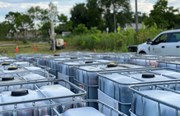The Basics and Beyond: What Every Environmental Consultant Needs to Know About Thermal Remediation
By: John LaChanceAs an environmental consultant you need to know about a lot of different things, everything from regulatory programs and requirements and the latest technologies for characterizing your site, to choosing the best remedial approach to address the specific site conditions and the objectives of your client. In this post, we share everything from the basics of defining thermal remediation and how to choose the right technology for your project to determining when a combined remedies approach is required.
How to Choose the Right Thermal Technology
Choosing a thermal treatment option is a big decision, and there are multiple variables that determine if the project will ultimately be successful. With so much riding on this choice, it’s important to understand how to choose the technology most suited for your site. In this blog post, we cover why you need to start with a strong conceptual site model (CSM), and where to go from there.
Considerations for Meeting Site Goals on In Situ Thermal Remediation Projects
A variety of mistakes made on thermal treatment projects—like inadequate vapor capture, shallow contaminant condensation, fugitive emissions and water infiltration into the wellfield—can often be prevented with the correct use of vapor covers. In this blog post, Technical Director Steffen Griepke Nielsen explains the factors that determine whether or not vapor covers should be installed during thermal remediation.
Thermal Modeling: Science…or Magic?
Planning a thermal remediation strategy might seem like magic, but Technical Specialist Amber Bonarrigo pulls back the curtain to reveal how different aspects of the project are determined. She explains the ins and outs behind identifying the appropriate operational duration, developing the design basis for the treatment system, and planning the required energy usage.
Why Data Management is One of the Most Important Parts of a Thermal Remediation Project
If you’ve ever been curious about how thermal projects are optimized throughout the duration, you’ll want to read this post from Instrumentation Engineer Anthony Caravella. He explains how real-time process numbers and field data can be used to course correct and fine tune at any point, and how proper data management leads to on-time and on-budget project completions.
Is Steam a Dead Remediation Technology?
Steam enhanced extraction (SEE) was the first type of ISTR available for remediation projects, but with newer thermal technologies on the market and reaching maturity, we are often asked if SEE is an outdated option. The short answer is no—the long answer is contained in this blog post from Technical Director Steffen Griepke Nielsen.
Treatment of Fractured Rock – How is it Different?
There are two main challenges when working on fractured rock sites: deciding on a thermal treatment volume that doesn’t make the problem worse and designing and implementing an effective and safe thermal system. This blog post tackles the first of those challenges.
Designing an Effective (and Safe) Thermal System at Fractured Rock Sites
This blog post starts up where the last one left off and explains how to design and implement an effective and safe thermal system at challenging fractured bedrock sites.
Combining In Situ Thermal Remediation Technologies to Tackle Complex Sites
Many sites that once seemed contaminated beyond repair are now considered viable for clean-up, thanks to improved technologies and processes. What is becoming evident, however, is that for many complex sites, a single remedy will not be sufficient. This blog post discusses how multiple in situ thermal remediation (ISTR) technologies could be combined on a single site, or how they could be used in conjunction with bioremediation or in situ chemical oxidation (ISCO) treatments.
In Situ Bio-Enhanced Thermal Remediation
Part 1 of this series dives into the types of thermal remedies available and their respective strengths and weaknesses.
Part 2 of this series explains the concept of biodegradation, how it plays out with chlorinated solvent biodegradation and reductive dichlorination, and how these can be combined with ISTR for a more robust remedy.
If you’d like to learn more about thermal remediation, reach out to John LaChance at [email protected].

